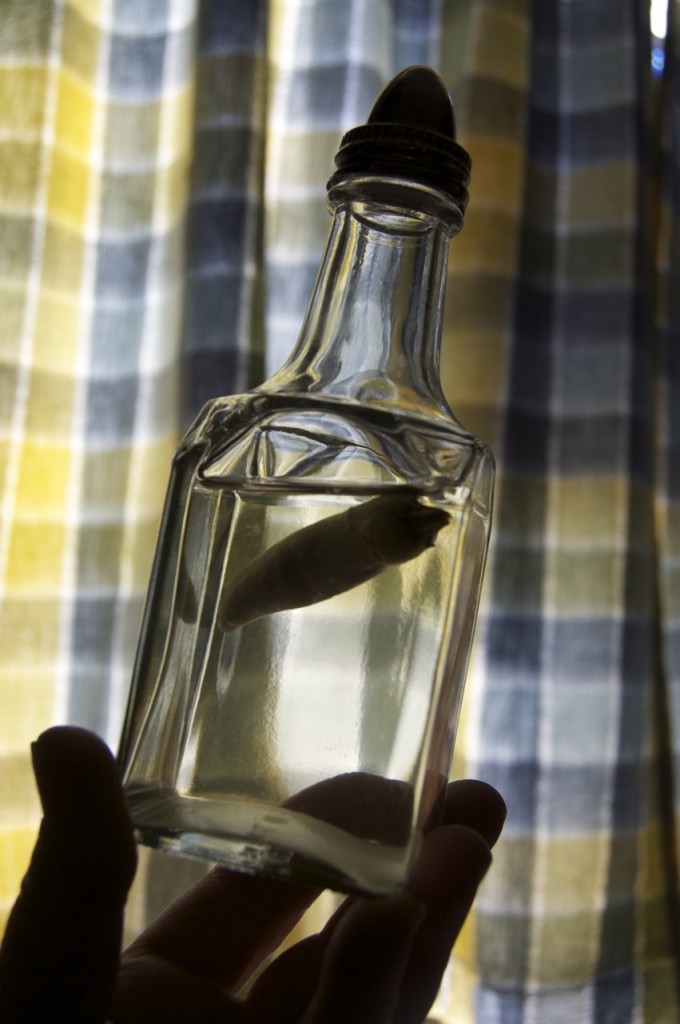After spending so much time and blog space eating and writing my way around the globe, I’ve decided to shine a little light on the foods of my native South, The Old Country, as I sometimes call it (not the least bit ironically, mind you). I’m not talking about fancy, complicated dishes, but rather the good, basic, substantial food of the rural South. Because no matter how much haute cuisine I encounter these days, it is the stuff that nourished me when I was just a wee sprout that comforts me now.
A lot of people believe that since I’m Southern, I must be cooking heavy Southern dishes every day here in Los Angeles. Except for a special occasion every so often, I reserve eating like this for when I’m back home. We used to occasionally have barbecue shipped to us from Memphis, but we don’t do that too often any more. While a couple of places in LA do a decent enough job with a Southern spread, Himself and I finally decided that when a particular food just doesn’t ring true, it’s better not to have it at all. So we go home with a list of all those foods we want to enjoy while we’re there and promise ourselves we’ll eat more responsibly once we’re back.
So what am I holding up in the photograph? It’s a bottle of white vinegar with a chili pepper in it. Pepper vinegar is the ubiquitous condiment of the Southern table, whose primary function–as far as I’ve ever known–is to sprinkle on your collard greens to enliven them and tame their gaminess. It works great on black-eyed peas and other densely flavored and textured foods as well.
This bottle is quite fancy. Back home such a bottle would have originally come with a sauce of some kind in it. When it was empty, it would have been washed and filled with white vinegar and a green chili pepper, and a nail hole would have been driven into the lid. I didn’t have such a bottle, so I went all high toned and bought a bottle especially for the job. Disgraceful, I know, but I have become citified…
I spend so much time in the city now, and away from my native South, that I’m feeling the need to pay a little more attention to it and to share some of those dishes with you. Just one dish each week, because most everything from back home is so laden with butter, lard, bacon fat or some other tasty health hazard that one dish a week is probably all I should risk–unless I can get a farming job to keep me sufficiently active.
So it’s time to pull out the iron skillet and put it back into regular use. During the past few years I’ve mainly used it for making cornbread, but it really should be in everyday employment. In her cooking heyday, my mother’s iron skillets were in such good, well-seasoned shape that she could even cook eggs and fish in them without any sticking. I aspire to get my cast iron in that good a shape!
Have a great Christmas, Hanukkah, Kwanzaa, Winter Solstice and holiday season everyone. Here’s to great times–and meals!–with friends and family, and to Peace on Earth.
See you in 2012!

















I have been using cast iron skillets for decades. My 10 inch was my grandmother’s. Must be 100+ years old. Whenever I buy new pots/pans, I choose cast iron. Nothing cleans better, cooks more evenly, or spans the years. Downside: heavy. Fearful that there may come a time I can’t lift them, I work out and lift weights! Planning to handle that cookware in my 90’s. God, I must really be an obsessive cook! .
Yeah, I love all my old cast iron from home. I’m sure we’d have gotten better gas mileage driving cross-country if we hadn’t had cast iron in the moving van.
As for growing older, I’d say just use the smaller skillets. Leave those honkin’ big heavy ones for the young ‘uns to lift for you. I actually have a Lodge cast iron skillet that’s made to cook a single egg. It’s tiny, but if I live long enough, it may be all I can lift on my own. At least I’ll have a well-made egg, right?!
Cheers! Carol
I don’t know if it’s a southern wives’ tale or not, but I was told that cooking in cast iron is good for you. I don’t know if iron can actually leach through my old skillet, but I know it’s better for you than cooking in aluminium.
I am looking forward to your future posts. I can’t wait to see if the recipes vary from west to middle Tennessee.
Thanks, Suzanne. Yes, you do receive a dose of iron from cooking in cast iron. And excess iron washes out of the system, so your body doesn’t stockpile what it doesn’t need.
As for those recipes, some will come from my family and others, from friends in different parts of the South. And some I’ll modify, as the mood hits me and as my taste buds demand. Let’s face it: lima beans need more than salt and pepper to make them palatable!
If you have any old Southern family recipes you’d like to share, please let me know.
Thanks!
Carol